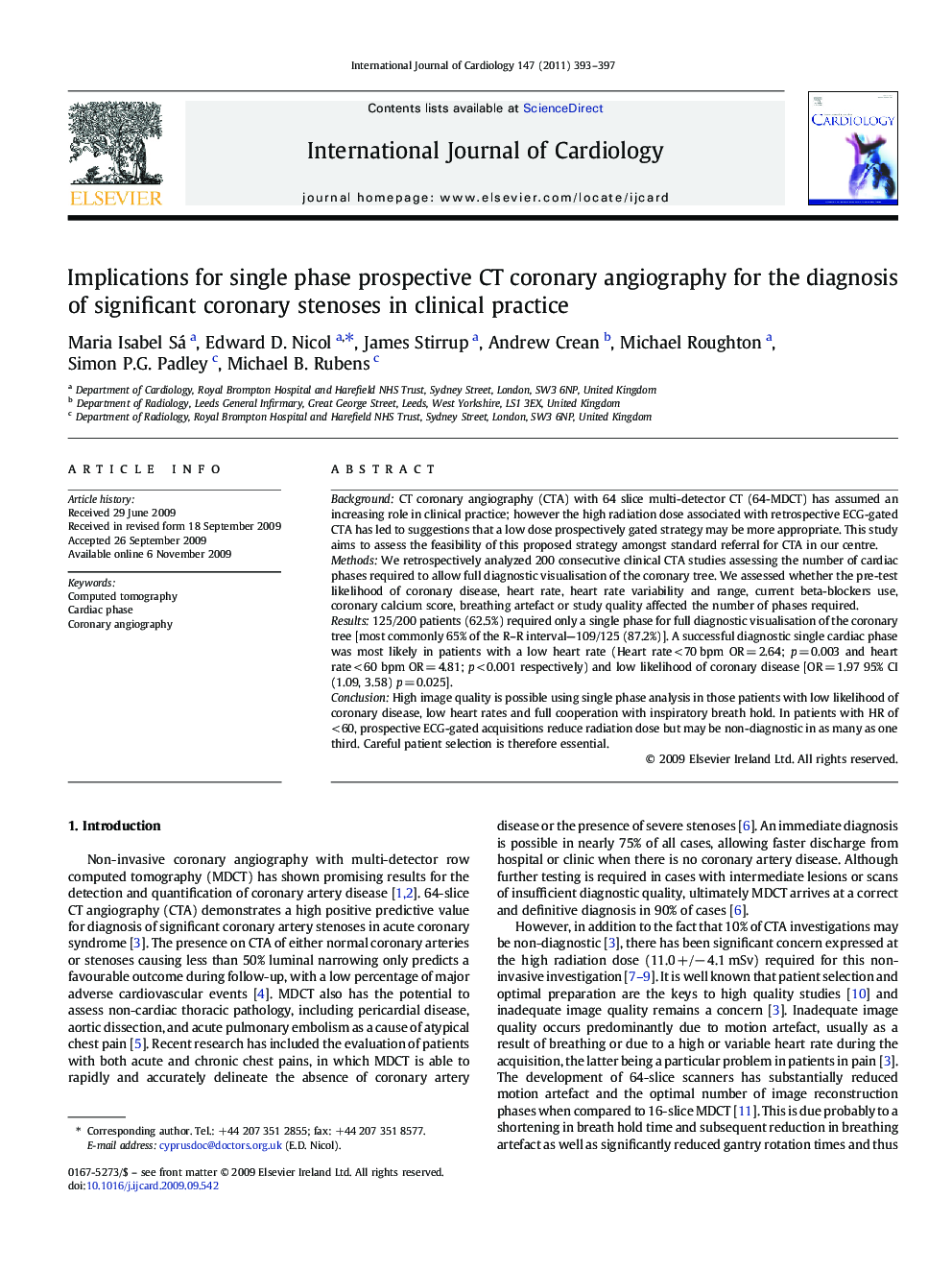| Article ID | Journal | Published Year | Pages | File Type |
|---|---|---|---|---|
| 2931354 | International Journal of Cardiology | 2011 | 5 Pages |
BackgroundCT coronary angiography (CTA) with 64 slice multi-detector CT (64-MDCT) has assumed an increasing role in clinical practice; however the high radiation dose associated with retrospective ECG-gated CTA has led to suggestions that a low dose prospectively gated strategy may be more appropriate. This study aims to assess the feasibility of this proposed strategy amongst standard referral for CTA in our centre.MethodsWe retrospectively analyzed 200 consecutive clinical CTA studies assessing the number of cardiac phases required to allow full diagnostic visualisation of the coronary tree. We assessed whether the pre-test likelihood of coronary disease, heart rate, heart rate variability and range, current beta-blockers use, coronary calcium score, breathing artefact or study quality affected the number of phases required.Results125/200 patients (62.5%) required only a single phase for full diagnostic visualisation of the coronary tree [most commonly 65% of the R–R interval—109/125 (87.2%)]. A successful diagnostic single cardiac phase was most likely in patients with a low heart rate (Heart rate < 70 bpm OR = 2.64; p = 0.003 and heart rate < 60 bpm OR = 4.81; p < 0.001 respectively) and low likelihood of coronary disease [OR = 1.97 95% CI (1.09, 3.58) p = 0.025].ConclusionHigh image quality is possible using single phase analysis in those patients with low likelihood of coronary disease, low heart rates and full cooperation with inspiratory breath hold. In patients with HR of < 60, prospective ECG-gated acquisitions reduce radiation dose but may be non-diagnostic in as many as one third. Careful patient selection is therefore essential.
